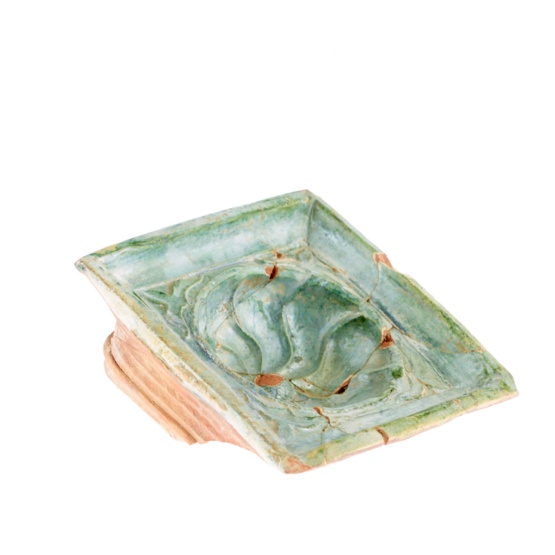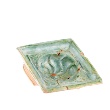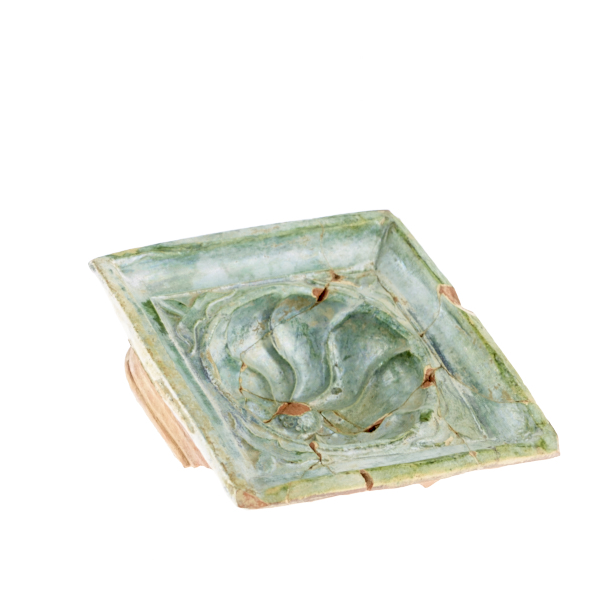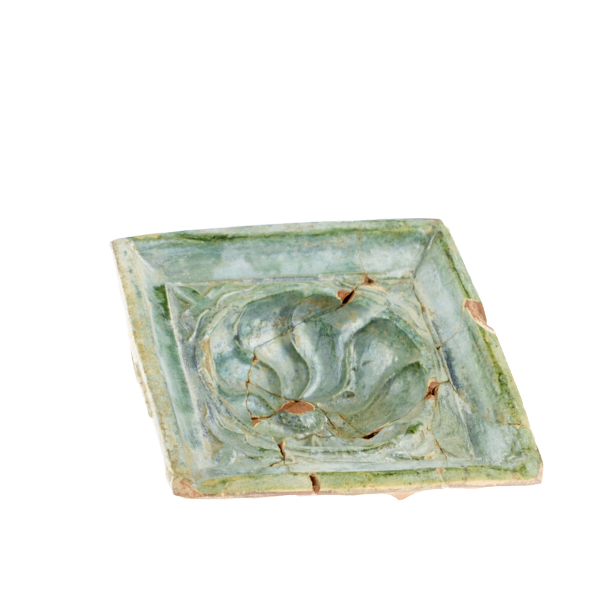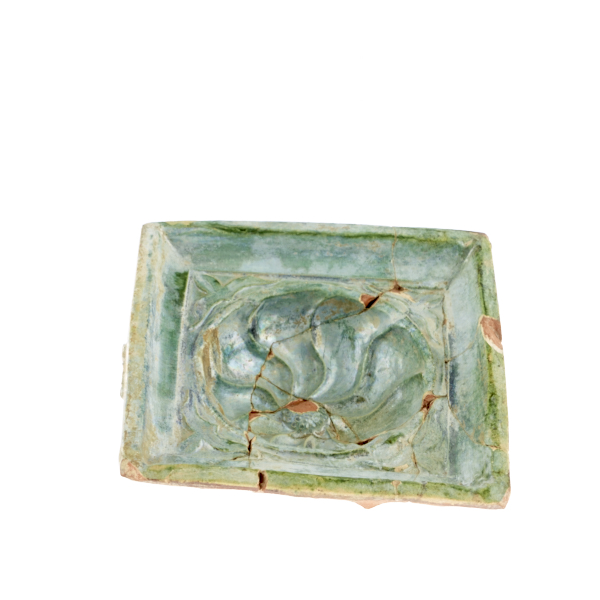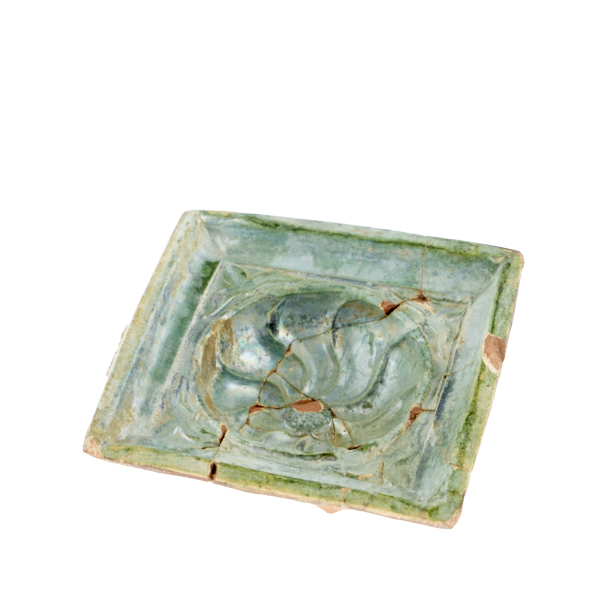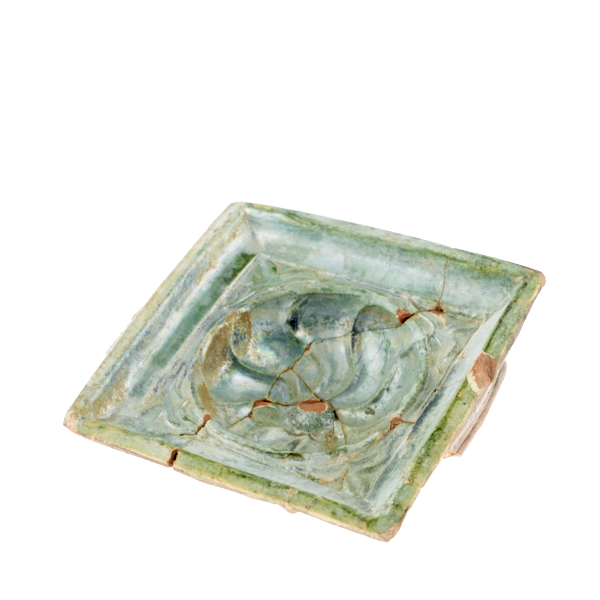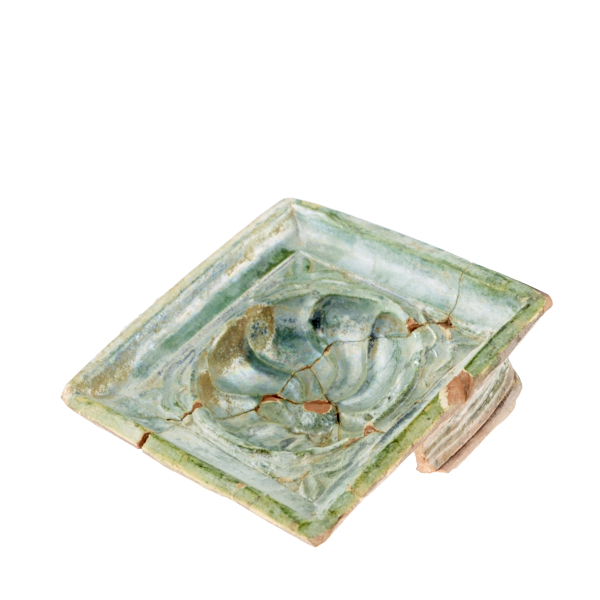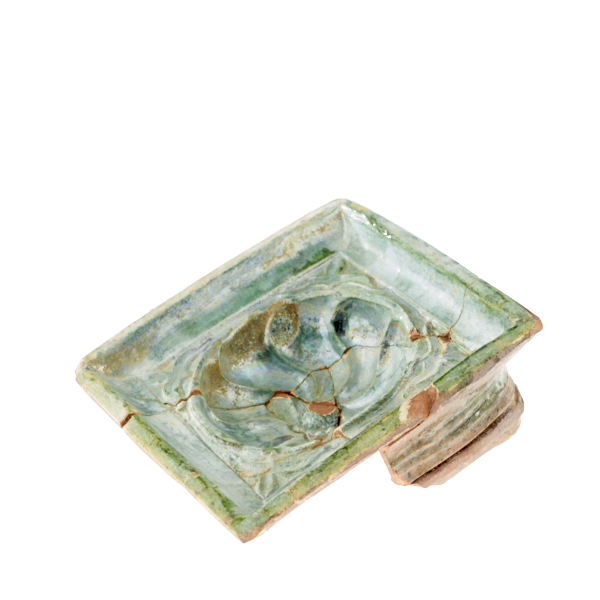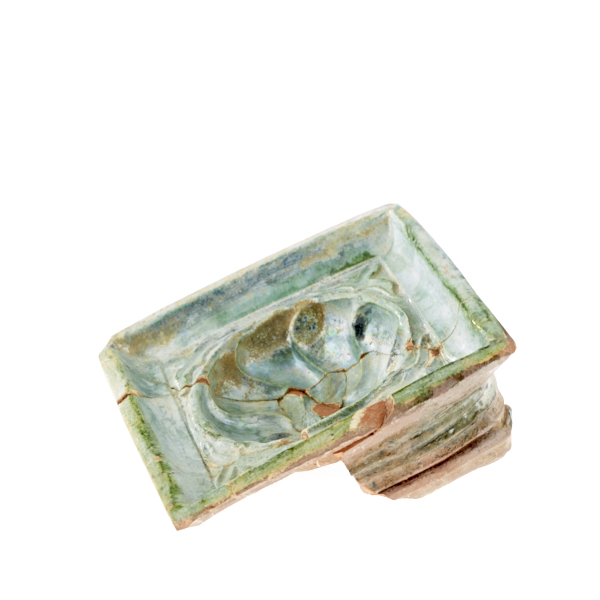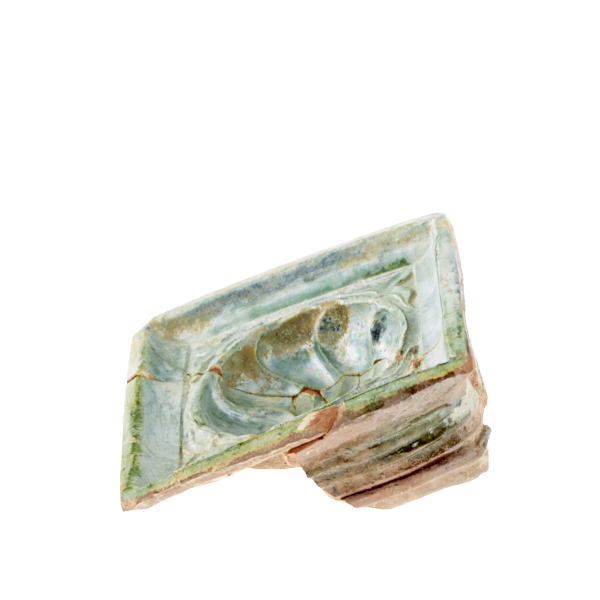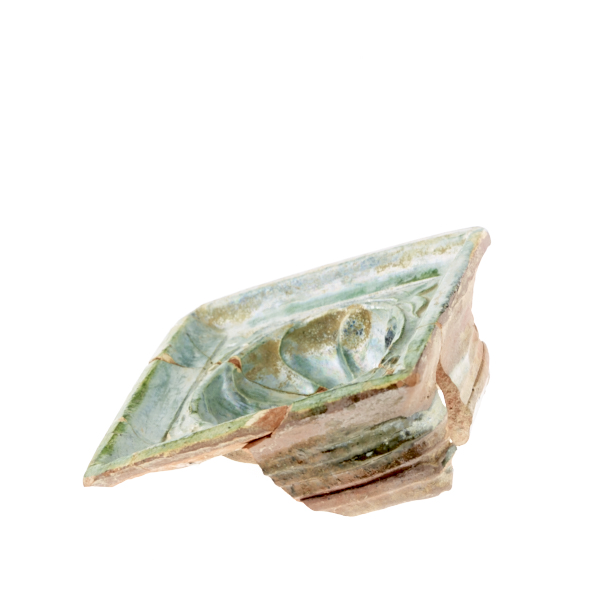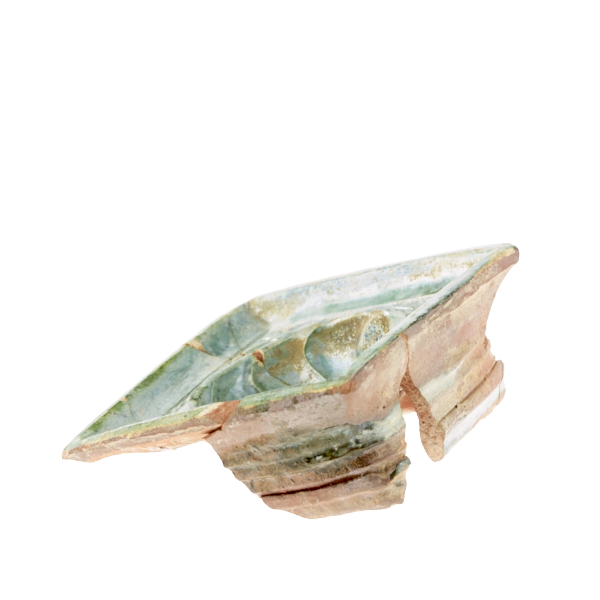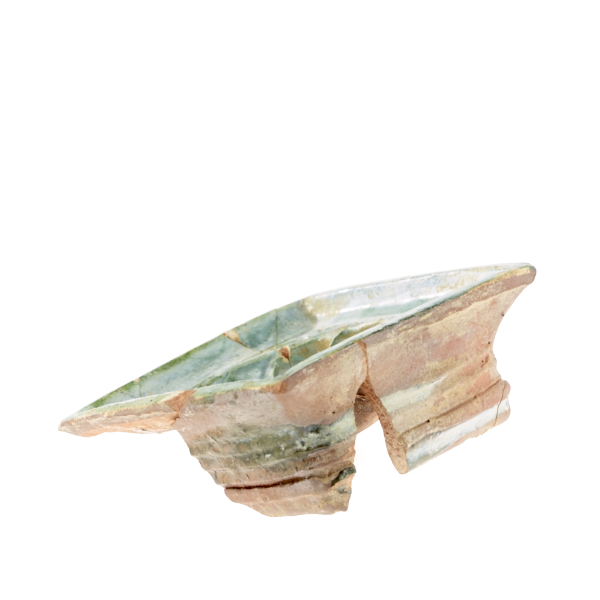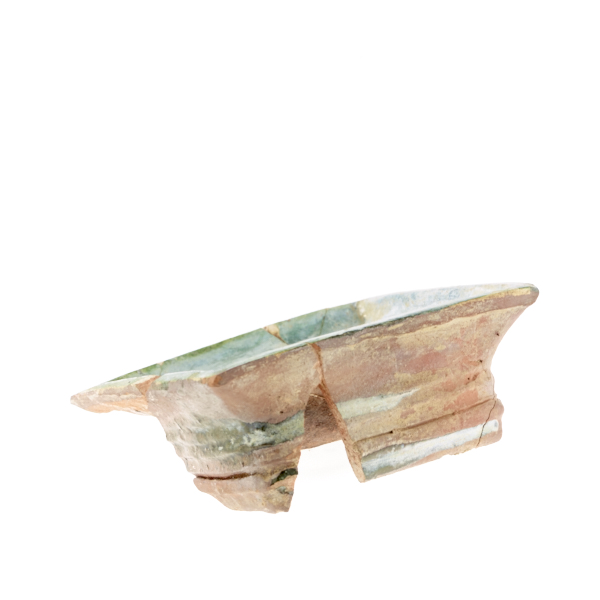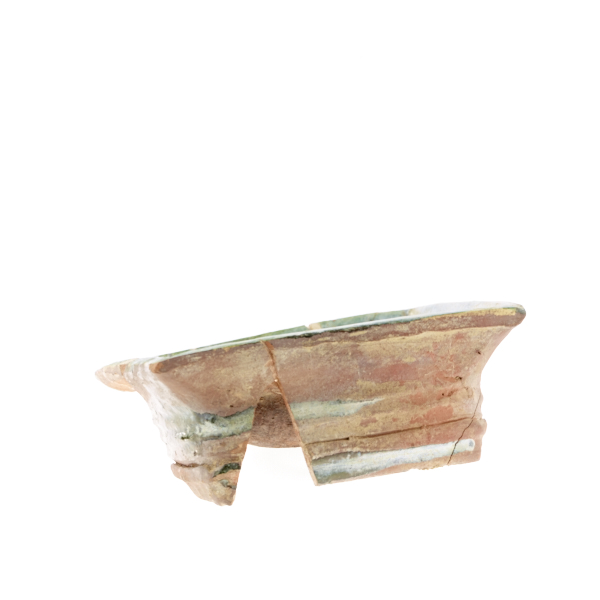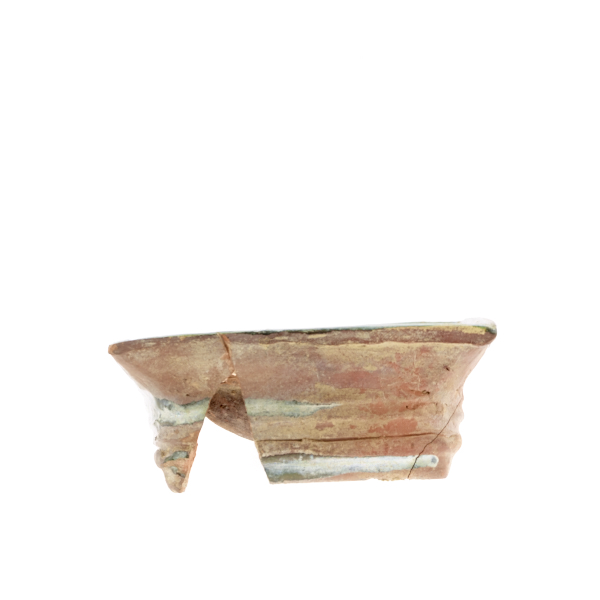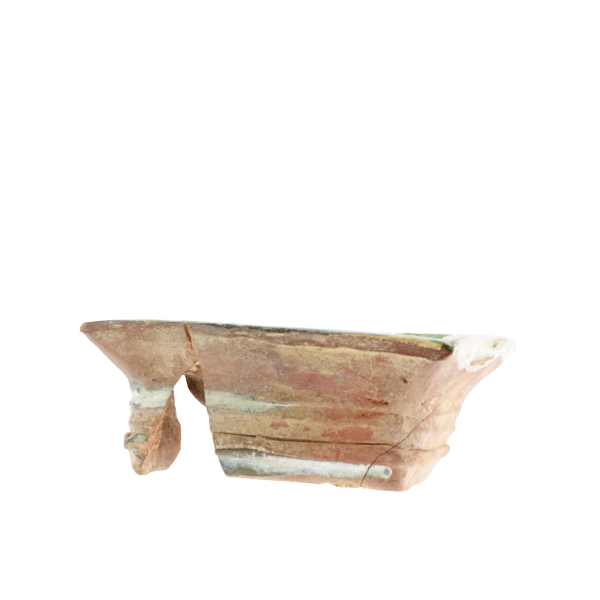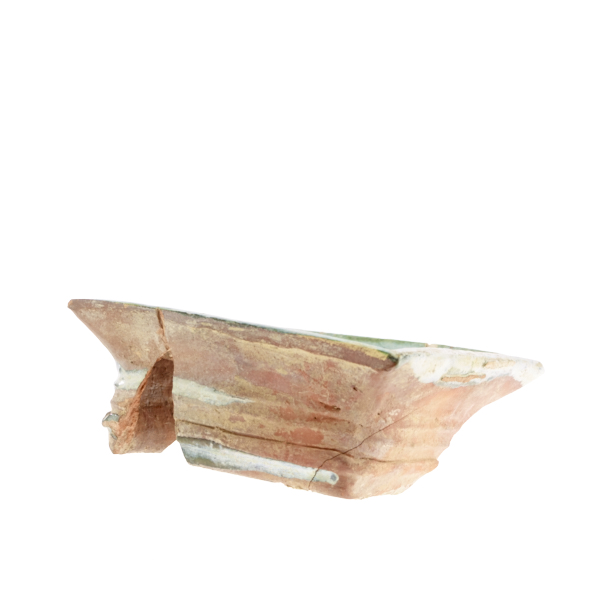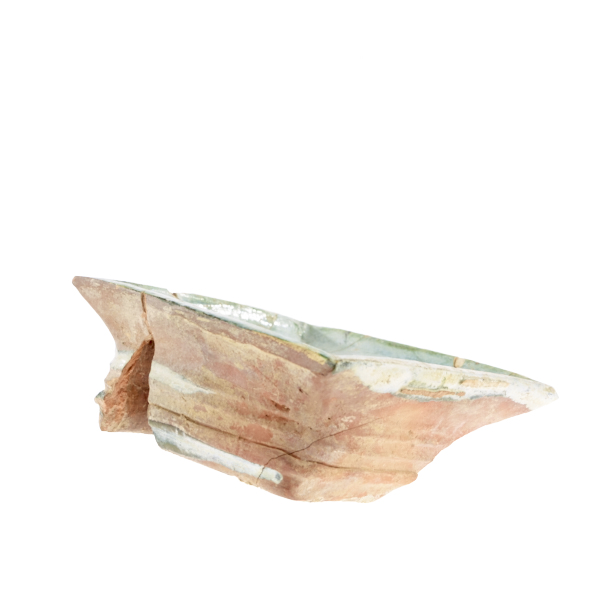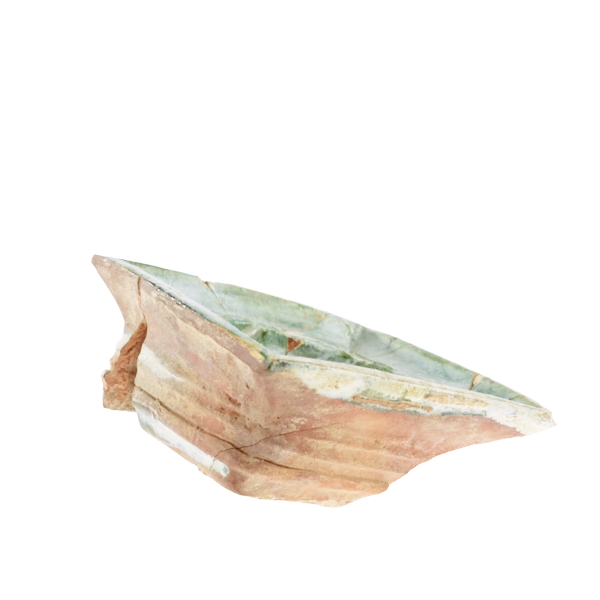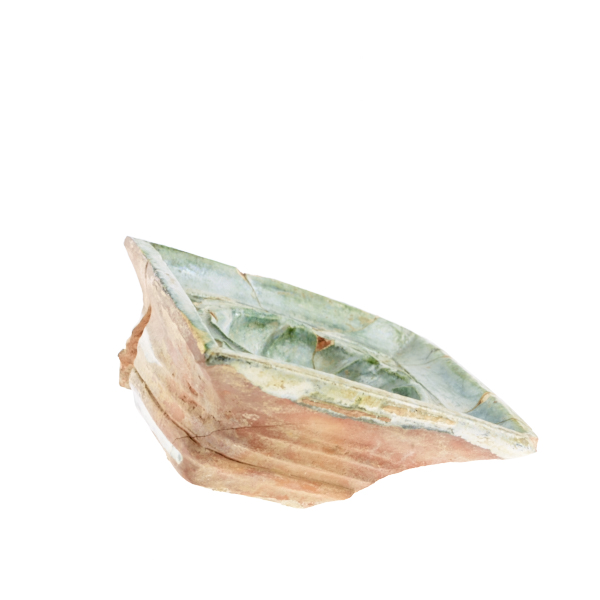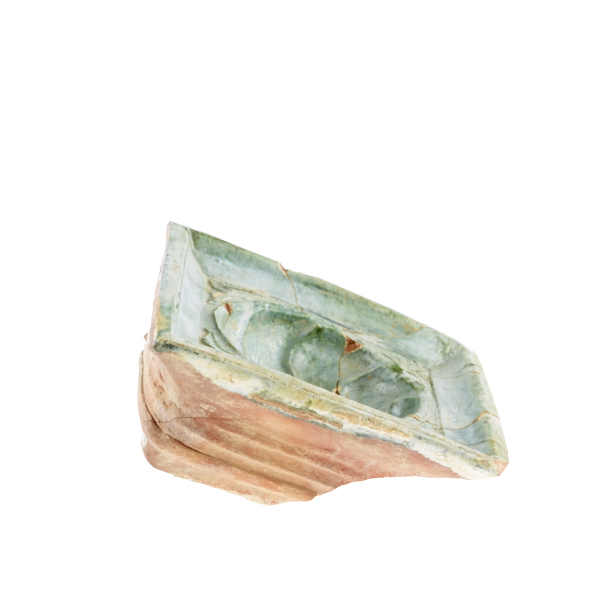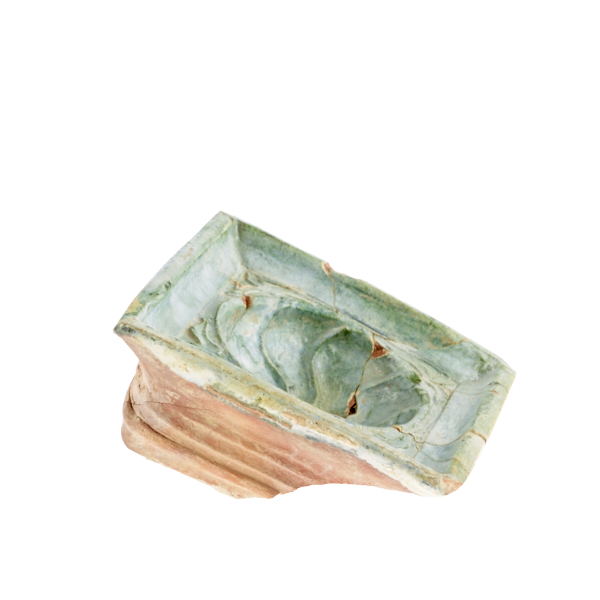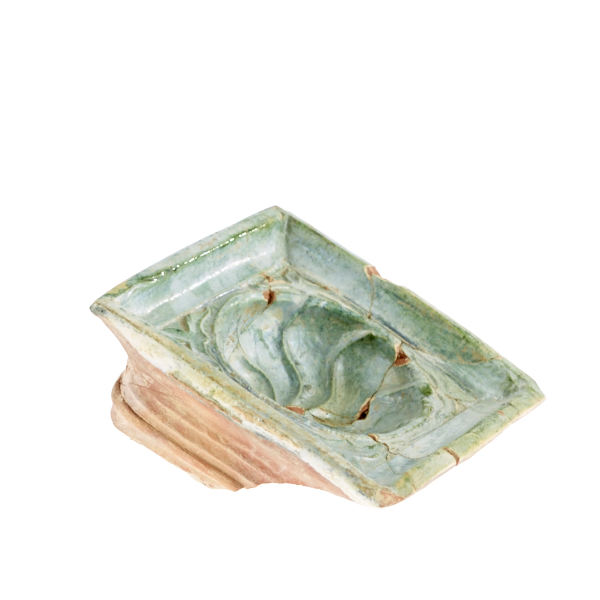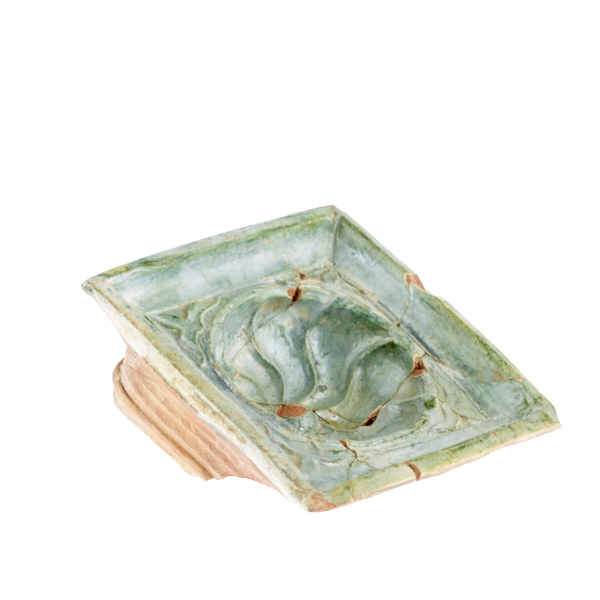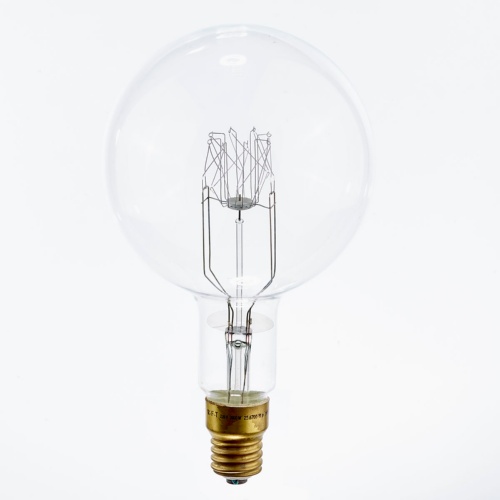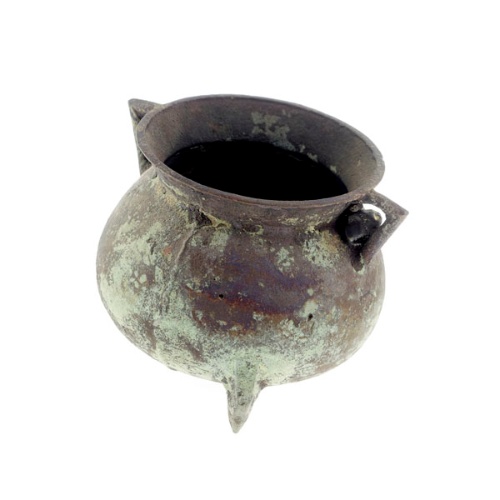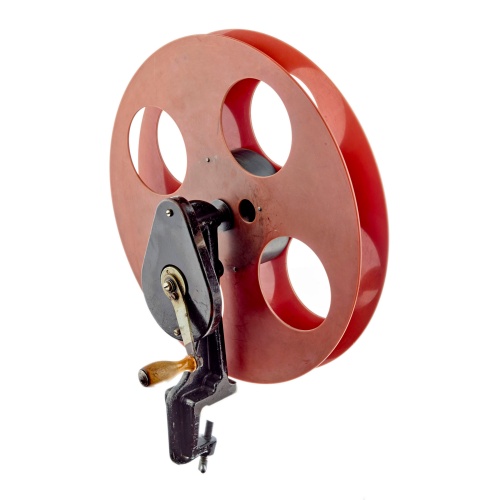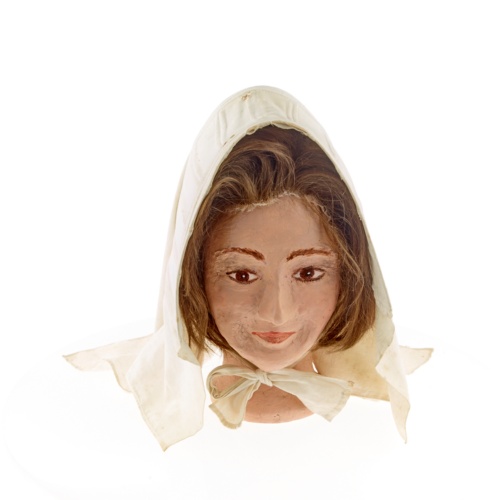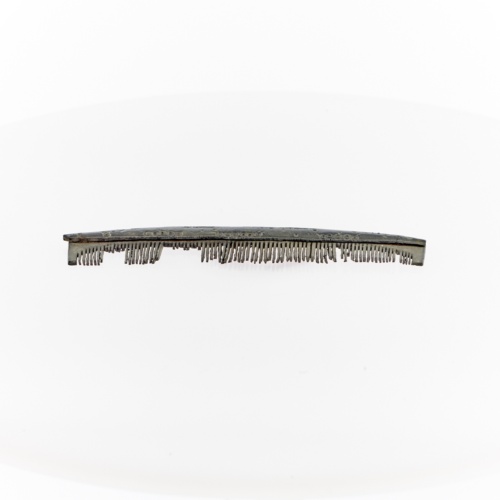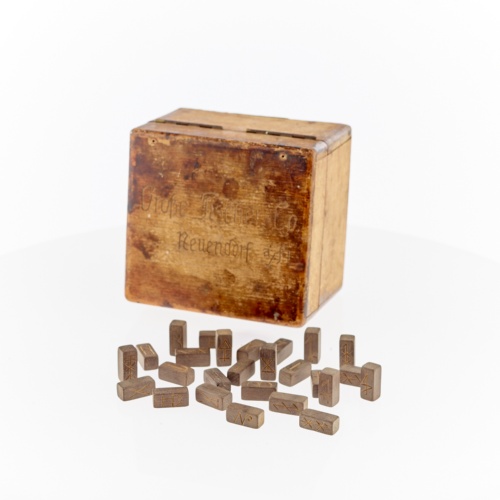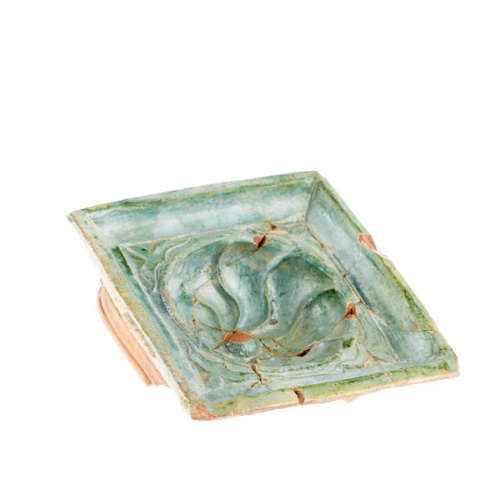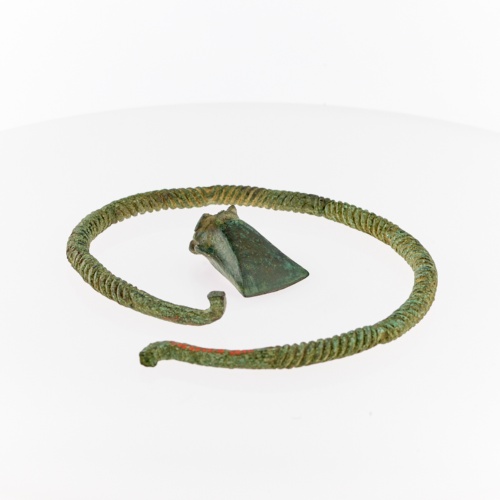Oven tile
- glazed clay
- monastery/Hiddensee
- around 1500
- height: 18 cm
This so-called 'Blattnapfkachel' with its the typical square bordering and green glaze was probably fitted to a monastery oven after 1500. Its pendentives are adorned with floral motifs, and there is a curvaceous, spiral rosette along its central line. The site of its discovery in the former closet of the late medieval warm air heating system would permit the assumption that it was discarded.
Wizlaw II, Prince of Rügen (1240-1302), granted Hiddensee to the Cistercian monks from Neuenkamp Monastery on 13 April 1296, where they planned to found an abbey. The remoteness of the island offers the ideal setting to lead a life devoted to work and prayer. The monastery dominates life on the island for many years. The convent is dissolved during the Reformation.
Finds such as this oven tile demonstrate that the monastery was well appointed. As was common for the time, the monastery appears to have been largely unheated in the 14th/15th centuries. That situation changes later on. This and other finds are confirmation.
Text: J.L.
